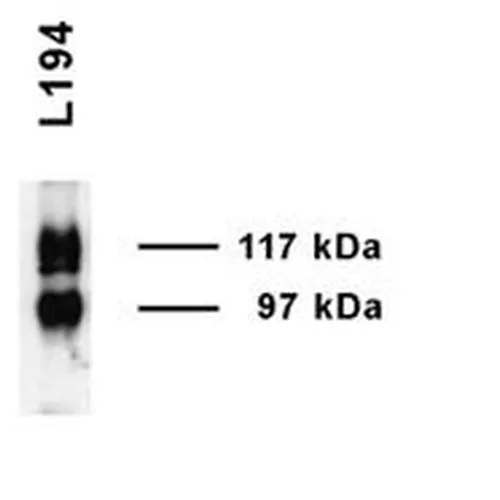UT-A1 Antibody
CAT:
400-SPC-406D
Size:
100 µg
Price:
Ask
- Availability: 24/48H Stock Items & 2 to 6 Weeks non Stock Items.
- Dry Ice Shipment: No






UT-A1 Antibody
- Background: UT-A1, a kidney-specific urea transporter is expressed in the renal collecting duct where it mediates trans-epithelial urea transport and is a target for regulation by vasopressin. Urea movement out of the collecting duct in the inner medulla of the kidney allows accumulation of urea in the medullary interstitium, thereby allowing maximum water reabsorption from the collecting ducts. (The antibody also recognizes a second protein from the UT-A gene driven by transcription from an alternative promoter and expressed in the thin descending limb of Henle, viz. UT-A2) (1, 2).
- Description: Rabbit Anti-Rat UT-A1 Polyclonal
- Specifications: Detects ~97 and 127kDa.
- Product Name Alternative: Neuroscience, Pumps/Transporters, Urea Transporters
- CAS Number: 9007-83-4
- UNSPSC: 12352203
- Gene ID: 54302
- Swiss Prot: Q62668
- Accession Number: NP_062220
- Cellular Locus: Cell Membrane | Apical Cell Membrane
- Host: Rabbit
- Species Reactivity: Rat, Mouse
- Immunogen: Produced against a synthetic peptide mapped to the C-terminal tail (amino acids 911-929) of rat UT-A1 (antibody designation L194)
- Target: UT-A1
- Clonality: Polyclonal
- Conjugation: Unconjugated
- Tissue Specificity: Isoform 1 and isoform 2 are expressed in the inner medulla of the kidney. Isoform 3 and isoform 4 are expressed in both the inner and outer renal medulla.
- Validated Applications: WB, ICC/IF, IHC
- Purification: Peptide Affinity Purified
- Concentration: 1 mg/ml
- Dilution: WB (1:1000); IHC (1:25); optimal dilutions for assays should be determined by the user.
- Weight: 0.1
- Buffer: PBS, 50% glycerol, 0.09% sodium azide *Storage buffer changes when conjugated
- Precautions: Not for use in humans. Not for use in diagnostics or therapeutics. For in vitro research use only.
- References & Citations: 1. Nielsen S., et al. (1996) Proc Natl Acad Sci U S A. 93(11): 5495-500. 2. Smith C.P. (2009) Exp Physiol. 94(2): 180-185.
